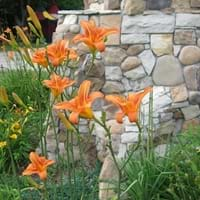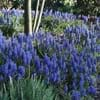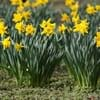Life Span
Perennial
Perennial
Type
Bulb or Corm or Tuber
Tree
Origin
China, Japan, Korea
Australia
Types
Hybrid Tiger Lilies, Double Orange, Ditch Lily
Not Available
Number of Varieties
Not Available
Habitat
Roadsides, Shaded sites, Woodlands
Scrubs, tussock grasslands, Upland savannas
USDA Hardiness Zone
2-8
10-11
Sunset Zone
21,22
8, 9, 12, 13, 14, 15, 16, 17, 18, 19, 20, 21, 22, 23, 24
Habit
Upright/Erect
Upright/Erect
Flower Color
Orange, Orange Red, Black
Lemon yellow
Flower Color Modifier
Bicolor
Bicolor
Fruit Color
Green, Brown
Gray Green
Leaf Color in Spring
Dark Green
Blue Green
Leaf Color in Summer
Light Green
Blue Green
Leaf Color in Fall
Several shades of Green
Blue Green
Leaf Color in Winter
Light Green
Blue Green
Leaf Shape
Lance shaped
Long Narrow
Plant Season
Spring, Summer, Fall
Spring
Sunlight
Full Sun, Partial Sun, Partial shade
Full Sun
Type of Soil
Clay, Loam, Sand
Loam, Sand
The pH of Soil
Acidic, Neutral
Acidic, Neutral, Alkaline
Soil Drainage
Well drained
Well drained
Bloom Time
Summer, Late Summer
Spring, Late Winter
Tolerances
Drought
Drought
Where to Plant?
Ground, Pot
Ground
How to Plant?
From bulbs
Seedlings
Plant Maintenance
Medium
Medium
Watering Requirements
Average Water Needs, Do Not over Water
Do not water excessively
In Summer
Lots of watering
Lots of watering
In Spring
Moderate
Moderate
In Winter
Average Water
Average Water
Soil pH
Acidic, Neutral
Acidic, Neutral, Alkaline
Soil Type
Clay, Loam, Sand
Loam, Sand
Soil Drainage Capacity
Well drained
Well drained
Sun Exposure
Full Sun, Partial Sun, Partial shade
Full Sun
Pruning
Remove damaged leaves, Remove dead branches, Remove dead leaves
Remove dead or diseased plant parts, Requires little pruning
Fertilizers
No fertilizers needed
All-Purpose Liquid Fertilizer, No fertilizers needed
Pests and Diseases
Lily Beetle, Slugs
Insects, Root rot
Plant Tolerance
Cold climate, Drought
Drought
Flower Petal Number
Single
Single
Foliage Texture
Medium
Fine
Foliage Sheen
Glossy
Matte
Attracts
Beetles
Butterflies
Allergy
Not Available
Asthma, Eye irritation, Headache, Nose Irritation, Throat itching, Vomiting
Aesthetic Uses
Beautification, Showy Purposes
Showy Purposes
Beauty Benefits
Not Available
Not Available
Environmental Uses
Air purification
Air purification, soil stabilisation
Medicinal Uses
chest congestion, Intestinal irritations
Not Available
Part of Plant Used
Flowers, Root
Flowers, Sap, Seeds
Other Uses
Used as Ornamental plant, Used for its medicinal properties
Used as a dye, Wood is used fore making tools
Used As Indoor Plant
No
No
Used As Outdoor Plant
Yes
Yes
Garden Design
Cutflower, Mixed Border, Wildflower
Shade Trees, Street Trees
Botanical Name
LILIUM lancifolium
ACACIA aneura
Common Name
Tiger Lily
Mulga, True Mulga
In Hindi
टाइगर लिली
Mulga
In German
Tiger Lily
Mulga
In French
Tiger Lily
Mulga
In Spanish
lirio de tigre
Mulga
In Greek
Κρίνος ποικιλόχρωμος
mulga
In Portuguese
Tiger Lily
Mulga
In Polish
Tygrys Lily
Mulga
Phylum
Magnoliophyta
Magnoliophyta
Class
Liliopsida
Magnoliopsida
Family
Liliaceae
Fabaceae
Clade
Monocots
Angiosperms, Eudicots, Rosids
Tribe
Not Available
Not Available
Subfamily
Lilioideae
Not Available
Number of Species
Not Available
Difference Between Tiger Lily and Mulga Tree
If you are confused whether Tiger Lily or Mulga Tree are same, here are some features about those plants to help you choose better. Many people think that these two plants have the same characteristics, but one can see Tiger Lily and Mulga Tree Information and learn more about it. Fertilizers required for proper growth of Tiger Lily are No fertilizers needed, whereas for Mulga Tree fertilizers required are All-Purpose Liquid Fertilizer and No fertilizers needed. Hence, one should know the basic difference between Tiger Lily and Mulga Tree if you are planning to have them in your garden to enhance its beauty.
<
Flowering PlantsImportance of Tiger Lily and Mulga Tree
Want to have the most appropriate plant for your garden? You might want to know the importance of Tiger Lily and Mulga Tree. Basically, these two plants vary in many aspects. Compare Tiger Lily and Mulga Tree as they differ in many characteristics such as their life, care, benefits, facts, etc. Every gardener must at least have the slightest clue about the plants he wants to plant in his garden. Compare their benefits, which differ in many ways like facts and uses. The medicinal use of Tiger Lily is chest congestion and Intestinal irritations whereas of Mulga Tree is Not Available. Tiger Lily has beauty benefits as follows: Not Available while Mulga Tree has beauty benefits as follows: Not Available.
Compare Facts of Tiger Lily vs Mulga Tree
How to choose the best garden plant for your garden depending upon its facts? Here garden plant comparison will help you to solve this query. Compare the facts of Tiger Lily vs Mulga Tree and know which one to choose. As garden plants have benefits and other uses, allergy is also a major drawback of plants for some people. Allergic reactions of Tiger Lily are Not Available whereas of Mulga Tree have Asthma, Eye irritation, Headache, Nose Irritation, Throat itching and Vomiting respectively. Having a fruit bearing plant in your garden can be a plus point of your garden. Tiger Lily has no showy fruits and Mulga Tree has no showy fruits. Also Tiger Lily is not flowering and Mulga Tree is not flowering . You can compare Tiger Lily and Mulga Tree facts and facts of other plants too.





